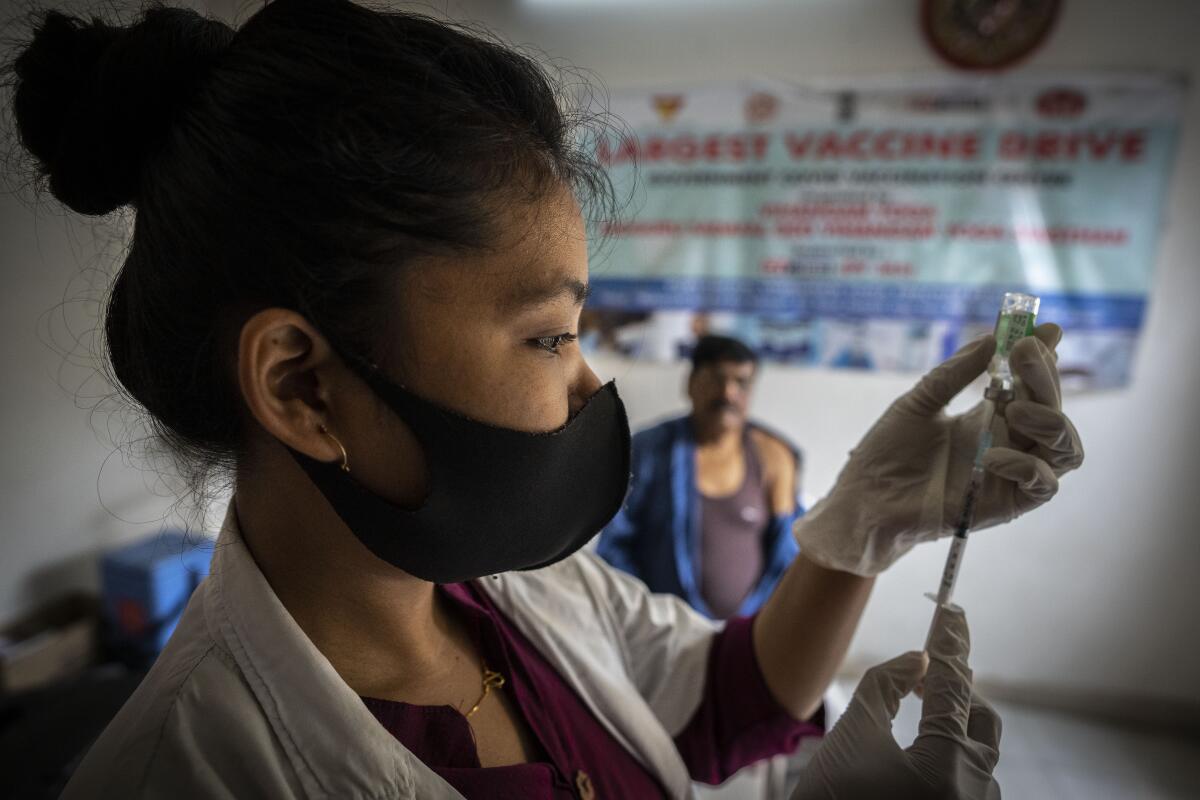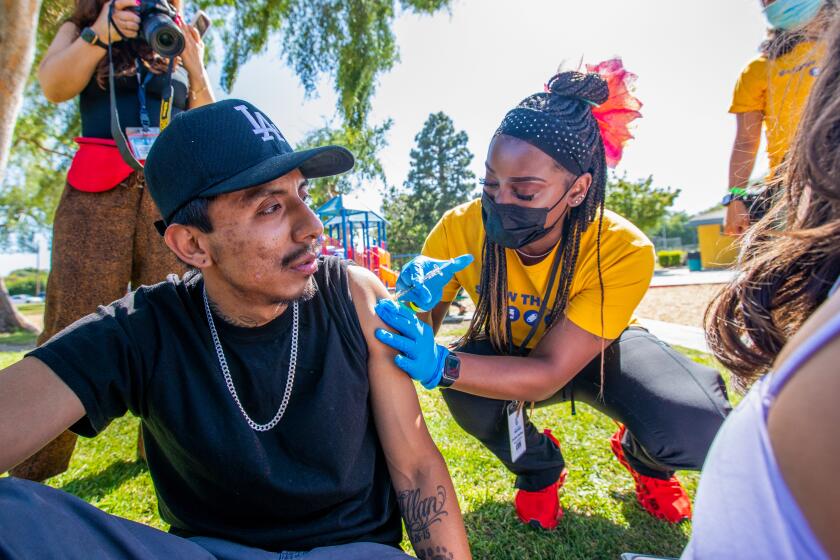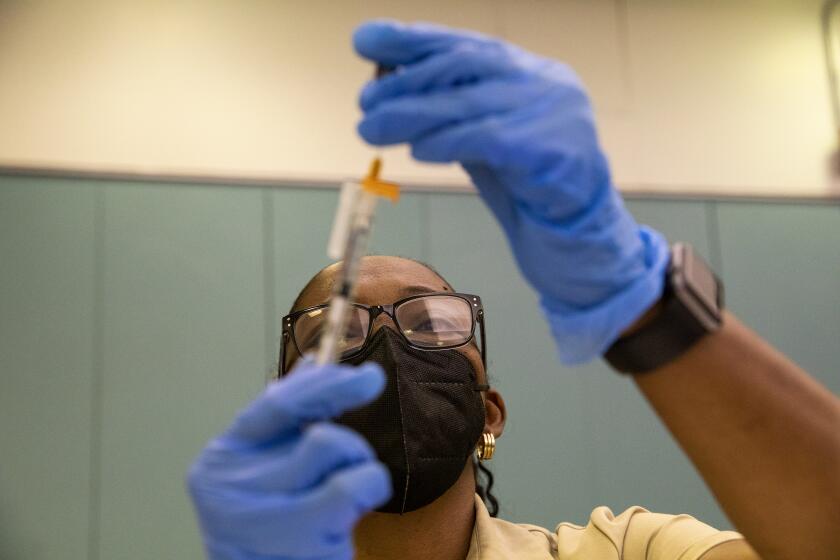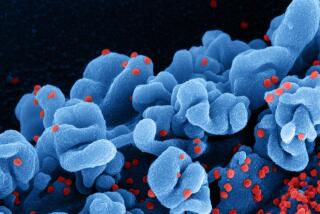Yet another highly infectious Omicron variant is raising concerns in India and beyond

- Share via
The quickly changing coronavirus has spawned yet another super-contagious Omicron mutant that’s worrying scientists as it gains ground in India and pops up in numerous other countries, including the United States.
Two cases were recently identified on the U.S. West Coast. Helix, a company that supplies viral sequencing information to the Centers for Disease Control and Prevention, identified a third U.S. case last week.
Scientists say the variant — called BA.2.75 — may be able to spread rapidly and get around immunity from vaccines and previous infection. It’s unclear whether it could cause more serious disease than other Omicron variants, including the globally prominent BA.5.
“It’s still really early on for us to draw too many conclusions,” said Matthew Binnicker, director of clinical virology at the Mayo Clinic in Rochester, Minn. “But it does look like, especially in India, the rates of transmission are showing kind of that exponential increase.”
Whether it will outcompete BA.5, Binnicker said, is yet to be determined.
Still, the fact that it has already been detected even in many parts of the world with lower levels of viral surveillance “is an early indication it is spreading,” said Shishi Luo, head of infectious diseases for Helix.
Taking preventative measures is especially important now as BA.4 and especially BA.5 can reinfect even those who recently contracted an earlier Omicron subvariant.
The latest mutant has been spotted in several far-flung states in India and appears to be spreading faster than other variants there, said Lipi Thukral, a scientist at the Council of Scientific and Industrial Research-Institute of Genomics and Integrative Biology in New Delhi. It’s also been detected in about 10 other countries, including Australia, Germany, Britain and Canada.
Fueling experts’ concerns are mutations separating this new variant from Omicron predecessors. Some of these changes are in areas that relate to the spike protein and could allow the coronavirus to bind onto cells more efficiently, Binnicker said.
Another concern is that the genetic tweaks may make it easier for the virus to slip past antibodies, the protective proteins made by the body in response to a vaccine or infection from an earlier variant.
Experts say vaccines and boosters are still the best defense against severe COVID-19. In the fall it’s likely the U.S. will see updated formulations of the vaccine being developed that target more recent Omicron strains.
People who had only two initial doses of an mRNA COVID-19 vaccine fared no better against Omicron than those who were unvaccinated, new study finds.
“Some may say, ‘Well, vaccination and boosting hasn’t prevented people from getting infected.’ And, yes, that is true,” Binnicker said. “But what we have seen is that the rates of people ending up in the hospital and dying have significantly decreased. As more people have been vaccinated, boosted or naturally infected, we are starting to see the background levels of immunity worldwide creep up.”
It may take several weeks to get a sense of whether the latest Omicron mutant might affect the trajectory of the pandemic.
Luo said BA.2.75 was another reminder that the coronavirus is continually evolving and spreading.
“We would like to return to pre-pandemic life, but we still need to be careful,” she said. “ We need to accept that we’re now living with a higher level of risk than we used to.”
More to Read
Sign up for Essential California
The most important California stories and recommendations in your inbox every morning.
You may occasionally receive promotional content from the Los Angeles Times.












